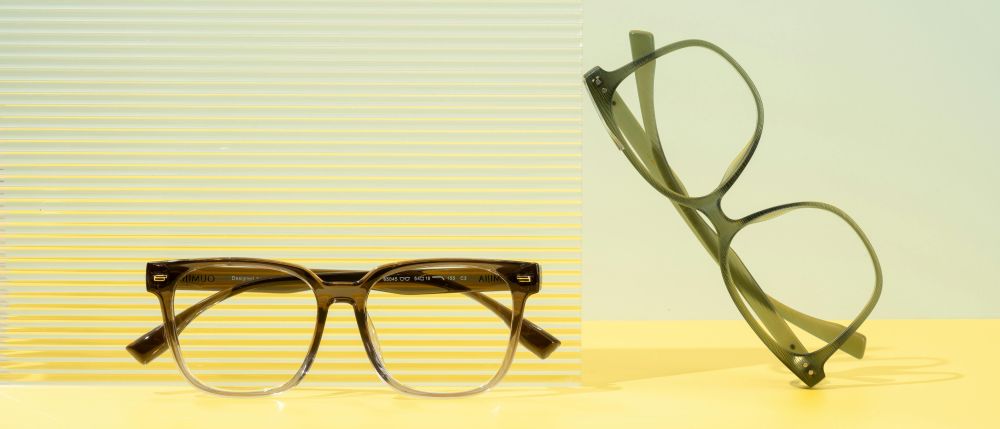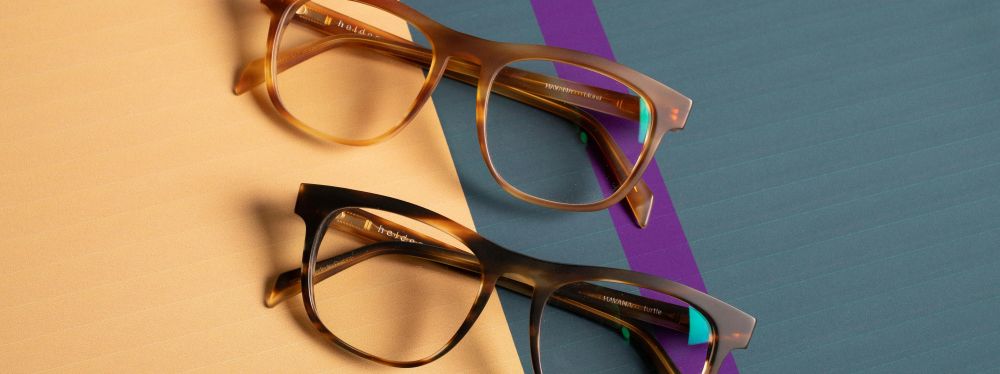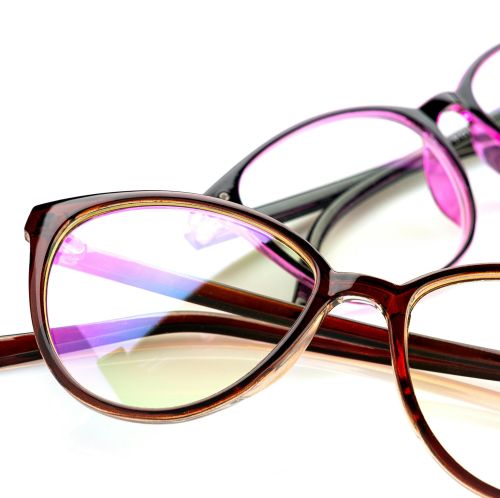
“Do I really need more than one pair of glasses, or are you just trying to sell me extra pairs?”
It’s a fair question, and one we hear regularly at Jacksons Styling Opticians. The short answer? Multiple pairs of glasses aren’t a luxury or a sales gimmick – for many people, especially as vision changes with age, they’re genuinely practical.
Let’s talk about why.
Your Eyes Don’t Have a One-Size-Fits-All Setting
Think about your shoes for a moment. You probably own trainers for walking, smart shoes for work, and perhaps boots for winter or sandals for summer. You wouldn’t wear running trainers to a wedding or formal brogues to the gym, would you?
Your eyes work the same way. Different activities demand different visual requirements, and one pair of glasses simply can’t optimize for everything you do throughout your day.
What Changes as We Get Older?
Around your mid-40s, something called presbyopia begins. It’s a perfectly normal part of ageing where the lens inside your eye gradually loses flexibility, making it harder to focus on close objects.
What this feels like in real life:
- Holding your phone at arm’s length to read texts
- Moving restaurant menus further away to see the print
- Struggling to read labels in shops
- Finding it harder to thread a needle or read small print
This is when many people discover that their vision needs become more complex. You might need help seeing distance (driving, watching TV), but also need correction for reading or computer work. Suddenly, one pair of glasses trying to do everything becomes a compromise.
The Varifocal Dilemma
Many people turn to varifocals (progressive lenses) as the solution – one pair of glasses with multiple prescriptions built in. For some people, they’re brilliant. But here’s what we see regularly:
The adaptation challenge: Varifocals require a learning period. Some people adapt within days; others struggle for weeks or never feel fully comfortable with them.
The peripheral vision issue: The way varifocals work means you have narrower zones of clear vision. Looking through the wrong part of the lens creates blur or distortion.
The posture problem: You’ll find yourself tilting your head to find the right part of the lens – chin up for distance, chin down for reading. After hours at a computer, this can lead to neck and shoulder discomfort.
The activity limitation: Try playing tennis in varifocals, or working under a car, or painting a ceiling. Activities where you need consistent vision at one distance become frustrating.
Varifocals work wonderfully for many people, particularly for general daily wear. But they’re not always the best solution for every situation.
Why Multiple Pairs Actually Make Sense
1. Dedicated Reading Glasses
Simple reading glasses optimized for 35-40cm (your natural reading distance) give you a wide, clear field of vision for books, tablets, and close work. No head-tilting, no searching for the right lens zone – just comfortable, effortless reading.
Perfect for: Evening reading, hobbies requiring close focus, checking your phone
2. Computer/Office Glasses
Your computer screen sits at a different distance than a book (typically 50-70cm), and you need to see across multiple monitors or reference documents at various distances on your desk.
Computer glasses are optimized for this intermediate zone, providing clear, comfortable vision across your entire workspace without the neck strain of varifocals.
Perfect for: Office work, extended computer use, working from home
The productivity benefit: People often don’t realize how much eye strain and fatigue affects their work until they try dedicated computer glasses. The difference can be remarkable.
3. Distance/Driving Glasses
If you need correction for distance vision, having dedicated distance glasses for driving, cinema trips, or watching TV provides the widest, clearest view without compromise.
Perfect for: Driving (especially night driving), sports, watching performances, any activity requiring sharp distance vision
4. Sunglasses with Your Prescription
This isn’t optional – it’s essential eye health. UV protection matters just as much for your eyes as for your skin, and squinting in bright sunlight isn’t just uncomfortable, it accelerates wrinkles and eye strain.
Prescription sunglasses mean you can see clearly and protect your eyes simultaneously.
Perfect for: Driving in bright conditions, holidays, outdoor activities, everyday sun protection
5. Activity-Specific Glasses
Depending on your lifestyle, you might benefit from:
- Sports glasses with impact-resistant lenses
- Swimming goggles with your prescription
- Safety glasses for workshop or DIY activities
- Lightweight glasses for the gym
The Practical Benefits You’ll Actually Notice
Less decision fatigue: Grab the right glasses for what you’re doing without thinking about it.
Better posture: No more head-tilting or awkward positions to find the right lens zone.
Reduced eye strain: Eyes optimized for each task means less fatigue and fewer headaches.
Style flexibility: Match your glasses to your outfit, occasion, or mood. Professional frames for work, fun frames for weekends.
Backup security: If one pair breaks or gets lost, you’re not stuck unable to function.
Longevity: Rotating between pairs means each pair experiences less wear, lasting longer.
What About the Cost?
Yes, multiple pairs represent more investment upfront. But consider this:
- You’ll likely need these different solutions anyway as your vision evolves
- Having the right glasses for each task often means you’re more comfortable and productive
- Many people waste money trying to make one pair of varifocals work for everything, then buying additional pairs anyway
- Frames and lenses last longer when you rotate between pairs
- The improved quality of life and reduced eye strain has real value
At Jacksons, we often help clients build their glasses wardrobe gradually – perhaps starting with everyday varifocals and dedicated reading glasses, then adding computer glasses or prescription sunglasses as needs and budget allow.
How Many Pairs Do Most People Have?
There’s no “right” number, but here’s what we typically see:
Minimum practical setup: Two pairs – one for everyday wear and one for specific needs (reading, computer, or distance)
Common setup: Three pairs – everyday glasses, reading/computer glasses, and prescription sunglasses
Comprehensive setup: Four or more pairs covering all activities and style preferences
Finding Your Perfect Combination
The question isn’t “should I have multiple pairs?” but rather “which combinations work best for my life?”
Do you spend eight hours a day at a computer? Computer glasses could transform your workday.
Love reading but frustrated by your varifocals? Dedicated reading glasses might be life-changing.
Drive a lot, especially in variable light? Prescription sunglasses aren’t luxury – they’re safety.
Making Multiple Pairs Work for You
Start with your biggest frustration: What visual task causes you the most difficulty or discomfort? That’s your priority for a second pair.
Consider your lifestyle: Office worker? Computer glasses. Avid reader? Reading glasses. Outdoor enthusiast? Prescription sunglasses.
Think about your day: Map out your typical activities. Where do your current glasses let you down?
Plan gradually: You don’t need everything at once. Build your collection as your needs and budget allow.
The Bottom Line
Having multiple pairs of glasses isn’t excessive – it’s practical. Your vision needs are complex and change throughout your day. Different tasks genuinely require different optical solutions, especially as presbyopia develops.
The goal isn’t to sell you more glasses. It’s to ensure you can see comfortably and clearly, whatever you’re doing, without compromise or frustration.
Ready to explore which combination of glasses would work best for your lifestyle?
Visit Jacksons Styling Opticians in Nantwich for a consultation. We’ll discuss your daily activities, visual challenges, and help you build the perfect glasses collection – whether that’s two pairs or five. Book an Eye Examination or Styling Consultation here or call us on 01270 625889 to discuss your next steps


